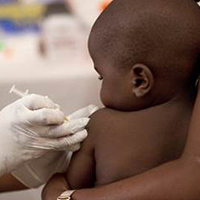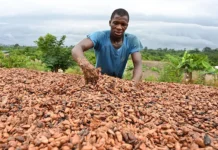(Trice Edney Wire/GIN) – With much fanfare, the world’s first injectable vaccine against malaria will be introduced in three countries – Ghana, Kenya and Malawi – starting in 2018.
 The vaccine – known as RTS,S or Mosquirix, trains the immune system to attack the malaria parasite, which is spread by mosquito bites. It was developed by the British pharmaceutical company, GlaxoSmithKline.
The vaccine – known as RTS,S or Mosquirix, trains the immune system to attack the malaria parasite, which is spread by mosquito bites. It was developed by the British pharmaceutical company, GlaxoSmithKline.
The World Health Organization (WHO) said the vaccine could potentially save tens of thousands of lives.
But its demanding regime – once a month for three months and then a fourth dose 18 months later – is raising concerns that it may be a logistical nightmare in the poorest parts of the world. In fact, the drug failed to get a green light from the world health body in 2015 when the manufacturer had planned to roll out the drug in a major campaign.
Further testing in pilot projects has been ordered by the WHO which can take up to 5 years to complete.
An earlier clinical trial of the vaccine in 2012 produced disappointing results. Only about a third of the vaccinated infants had fewer infections than a control group.
Moncef Slaoui, chairman of research and development at Glaxo, called the trial’s outcome at that time “less than we’d hoped for”. “But if a million babies were vaccinated, we would prevent 260,000 cases of malaria a year. This is a disease that kills 655,000 babies a year — 31 percent of that is a very large number,” he was quoted to say.
Other preventative malaria treatments include the drug camoquin, used by the group Doctors Without Borders (MSF) in 2014 in Sierra Leone. Sierra Leone has the fifth highest prevalence of malaria globally, and the disease is the biggest killer of children under five in the country.
Issues with the vaccine, including low protection and high required amount of doses, does not make the vaccine suitable for wide rollout in the areas that need it most (high disease burden, low resource settings). MSF calls for more research and development into a malaria vaccine that can give good protection and is easy to use in low resource contexts as a priority.















